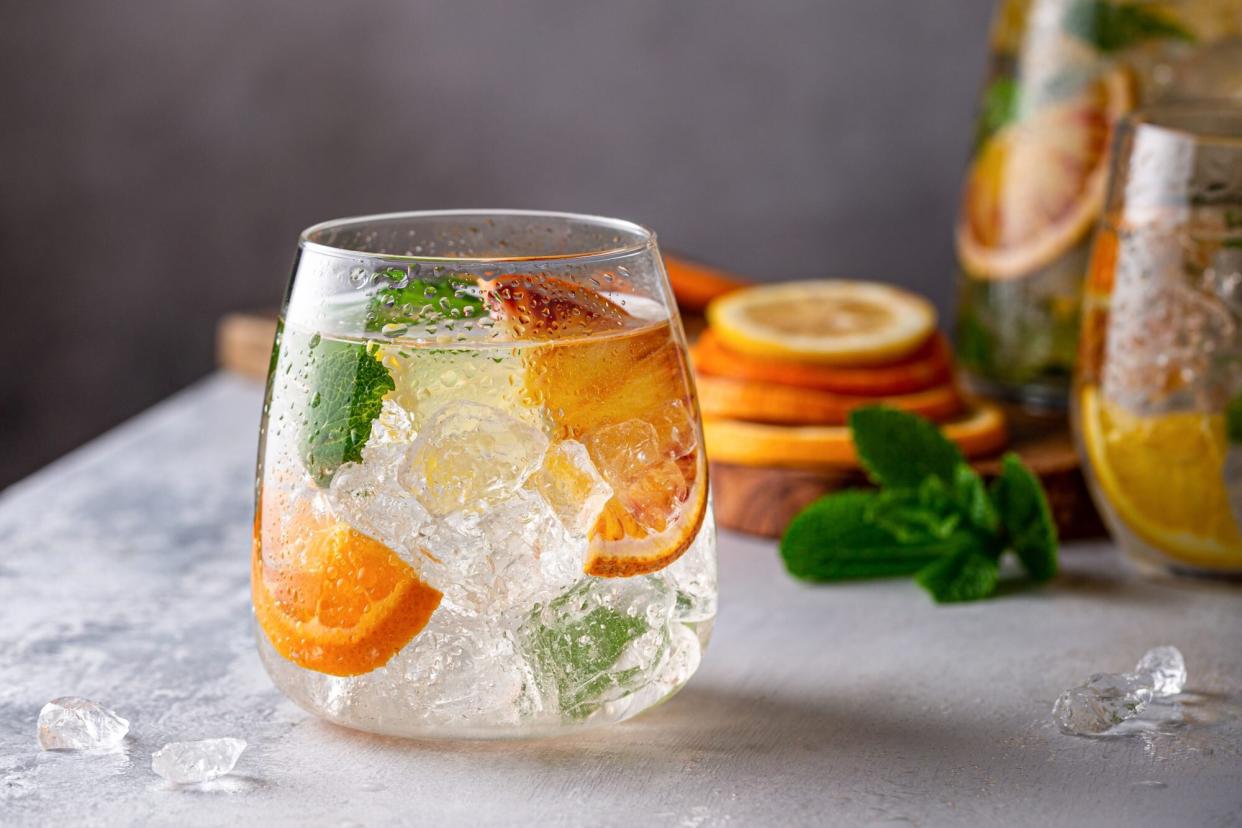How to Make Crystal-Clear Ice for Cocktails and Other Drinks

GETTY IMAGES
TABLE OF CONTENTS
On This Page
Why Ice Gets Cloudy
How to Make Clear Ice
Ice Cube Size
Making Enough Ice for a Party
When you make cocktails at home for friends and family, you take the extra time and pay close attention to the details. You practice your mixing and shaking skills, find just the right garnish, and pull out your most beautiful glassware—but you should also check your ice. If it's cloudy or foul-smelling, even your best mixology efforts will fall flat.
Luckily, making crystal-clear ice—and learning how to properly use it when you mix and pour drinks—isn't difficult. To help, we tapped Camper English, a cocktail writer, author (his upcoming book on all things ice will hit shelves in May!), and educator, and the foremost authority on ice in the country (maybe the world).
Using his science background, English has spent years studying, experimenting, and obsessing over ice (his Instagram account is peppered with stunning cocktail ice forms); he even developed a now-renowned ice-making technique called directional freezing, which uses insulation to redirect the out-to-in way ice typically freezes.
Related: '90s Drinks Are Back and Other Cocktail Trends for 2023
Why Ice Gets Cloudy
Cloudy ice isn't your fault—and it's probably not your fridge. Ice loses clarity simply because of the way it freezes. "Ice is cloudy mostly due to trapped air and impurities, such as minerals or organic matter," says English. "When water freezes, it tends to be clear at first, as the forming crystal lattice pushes air away from the point of freezing into the middle of the cube." According to English, this is why ice cubes made in a tray tend to be cloudier in the middle and clearer around the edges.
Good news: While cloudy ice isn't exactly aesthetically pleasing, it is perfectly safe to consume.
Refrigerator Ice Machines
Does your freezer churn out ice for you? Cubes made by the built-in ice maker are cloudy (or not) based on the way the machine freezes the water. Some modern manufacturers have rebooted their appliances to address the cloudiness, but unless you're in the market for a high-end refrigerator, you'll need to take another approach.
How to Make Perfect, Clear Ice
Through years of trial and error, English has found a way to change the freezing process, allowing him to create not just clear ice, but beautiful shapes that enhance shine and clarity.
Insulated Ice Containers
To make clear ice, you need to use insulated containers (like these) to control the direction that water freezes—English calls this directional freezing. "There are insulated ice cube and sphere trays you can buy that are optimized to make clear ice—or you can fill up an insulated cooler and freeze water in it with the top off," he says.
If you choose the plastic cooler method, the water will freeze clearly up until the bottom third. You will, however, have to use an ice pick to carve out chunks and pieces.
Sealed Ice-Cube Trays
It's okay to use cloudy ice in drinks, but you never want foul-smelling ice that has absorbed odors from your freezer. Ice should always smell clean. One way to avert the possibility of this malady is to keep your cubes in a sealed container in your freezer, instead of in an open tray or bin, says English.
Water Type
As for the type of water to use when making ice? If your tap water is clean and clear, go for it. "If your water tastes fine right out of the tap, so should your ice," English says. "You should be able to use whatever filtered or unfiltered water you drink to make ice. Just keep it fresh once it's made."
Ice Cube Size and Dilution
After you've mastered the method for clear ice, it's time to think about what size and shape your cubes (or spheres) should be. Your drink should inform your decision; you should also consider how fast you'd like the ice to dilute. "If you want a lot of dilution for a soda on a hot day, for example, you'll want smaller cubes that melt quickly," says English. "If you want a slow-sipping scotch on the rocks, one large cube or ice sphere is the way to go. It will dilute at a slower rate."
Plan Ahead for Party-Ready Ice
When it comes to ice, planning ahead is key. Make your ice the morning of your gathering to ensure it's both fresh and solid by the time your guests arrive. "For regular cubes, you should be able to get at least two if not three batches per day," English says. If you are using his directional freezing technique, allot extra time—it takes a bit longer. "If you're making punch for a party, consider making a big block in a Bundt cake mold or plastic container," he says. "You can also, of course, just buy bags of ice at the market."

